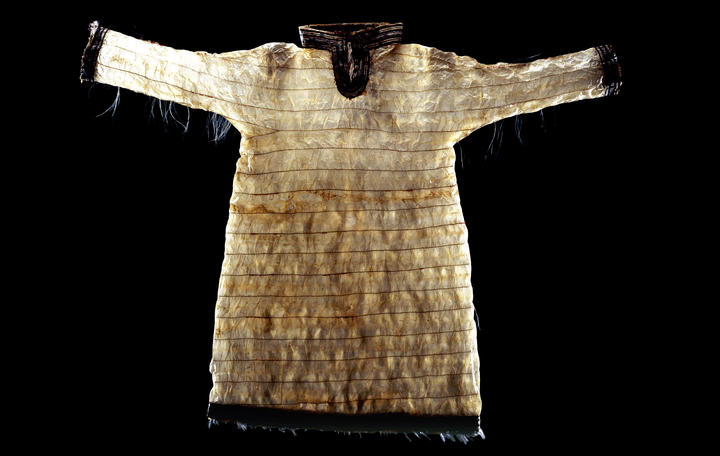Girl’s caribou-skin parka, early 19th century C.E., Inuit, 76 cm, West Greenland © Trustees of the British Museum. The parka may have been collected in the early nineteenth century during the search for the Northwest Passage. It is one of the first woman’s parkas to be collected in Greenland, and is similar in design to those, discovered with mummies at Qilatiksoq in 1972-8, dating to about 1475.
Clothing
Woman’s amauti of sealskin
Unfortunately, there is no documentation on this beautiful woman’s outer parka. However, the design of the costume, particularly the shape of the back flap and the decoration on the garment’s edges, indicate that it was made in Nunavik or Labrador. The back flap is narrow, curving slightly inwards below the waist, and ending in a rounded tip. The decoration with bands of contrasting white and dark stripes of sealskin at the edges of the garment are characteristic of costumes from this part of the eastern Canadian Arctic.
Kamleikas are outer garments made of sea mammal gut, an extremely light, tough, and waterproof material. They were sewn with grass or sinew threads which expanded when soaked, making the garment waterproof. Among the Aleut, hooded kamleikas were worn as protection against wind and rain over a birdskin or fur parka. These rather sparsely decorated everyday garments usually had drawstrings around the hood and at the cuffs. Although strong, gut can tear, and of course wears out with frequent use. Aleut men, who used their kamleikas almost daily, needed about three new garments each year. Each would take about a month to make.





